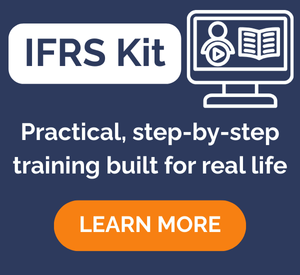IFRS 2 Share-Based Payment
Does your company remunerate its top management by granting them own shares? Or, do employees receive bonuses based on the increase of the company’s share price? Transactions whereby companies pay for the goods or services received by issuing shares or similar instruments are very…
Hedge Accounting: IAS 39 vs. IFRS 9
Business world as of today presents a huge amount of various risks to almost every company or entrepreneur. I’m sure that also your company faces at least some of these risks: foreign currency risk, price risk, inflation risk, credit risk – just name it. Many…
IAS 36 Explained (2025): Full Impairment Guide + Free Practical Checklist
Updated: April 2025 IAS 36 prescribes the procedures to make sure that an asset is carried at no more than its recoverable amount. This guide breaks it down clearly, plus it includes a free video lecture and downloadable IAS 36 practical checklist. Jump to section:…
IFRS 13 Fair Value Measurement
Many IFRS standards require you to measure the fair value of some items. Just name the examples: financial instruments, biological assets, assets held for sale and many other. In the past, there was limited guidance on how to set fair value; the guidance was spread…
How to Account for Compound Financial Instruments (IAS 32)
Compound financial instruments became very common way of raising cash by many companies, but their shareholders don’t like them that much. Why? Because many compound financial instruments contain the option to convert into shares. Just imagine you purchased convertible bond that gives you the right…
IAS 19 Employee Benefits
Last update: July 2023 Standard IAS 19 Employee Benefits prescribes rules for recognition and presentation of various types of benefits that employers provide to their employees. Have you ever read about employee benefits that the best employer in the world—Google provides to its employees? Just…
IAS 18 Revenue
The world today is packed with different kinds of products, services, transactions and many other activities that people and business do. Logically, it is sometimes very tough issue for accountants to determine WHEN and even WHETHER to recognize revenue in the financial statements. That’s exactly…
IAS 17 Leases
IAS 17 Leases deals with the accounting and financial reporting of the very common business transaction—lease. Leases are the great example of “off-balance sheet” financing if not recorded properly in the financial statements. In the past, many companies used to hide their finance lease liabilities and…
IFRS 9 Financial Instruments 2012
Update 2017: This is an article from 2012 and I wrote the totally updated article in 2017 here. However, there’s a valuable discussion in the comments to this article, and that’s why I did not delete it, but left it here. Please, if you have…
IAS 39 Financial Instruments: Recognition and Measurement
IAS 39 is a standard fully replaced by the new standard on financial instruments IFRS 9 applicable from 1 January 2018. If you would like to know more about this process, please read our article IAS 39 vs. IFRS 9: Clarifying the Confusion. UPDATE 2018:…
Recent Comments
- Albert on Accounting for gain or loss on sale of shares classified at FVOCI
- Chris Kechagias on IFRS S1: What, How, Where, How much it costs
- atik on How to calculate deferred tax with step-by-step example (IAS 12)
- Stan on IFRS 9 Hedge accounting example: why and how to do it
- BSA on Change in the reporting period and comparatives
Categories
- Accounting Policies and Estimates (14)
- Consolidation and Groups (25)
- Current Assets (21)
- Financial Instruments (56)
- Financial Statements (54)
- Foreign Currency (9)
- IFRS Videos (74)
- Insurance (3)
- Most popular (7)
- Non-current Assets (56)
- Other Topics (15)
- Provisions and Other Liabilities (46)
- Revenue Recognition (27)
- Uncategorized (1)












